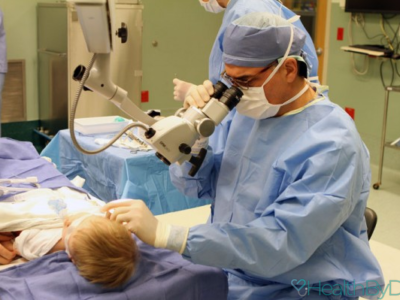Salivary gland stone, also known as sialolithiasis, is a common yet often painful condition affecting the salivary glands. It typically presents with recurrent swelling and discomfort, particularly during meals, especially when consuming acidic foods. The symptoms of salivary gland stone can significantly impact daily life, making timely diagnosis and salivary gland stone treatment crucial. Diagnosis of salivary gland stone usually involves clinical examinations and imaging techniques such as ultrasound and sialography, which help identify the location and size of the stones. For persistent cases, innovative procedures like salivary duct endoscopy and surgical removal of the salivary gland may be considered to alleviate symptoms and restore normal gland function.
The condition known as sialolithiasis refers to the formation of stones within the salivary glands, leading to inflammation and discomfort. This medical issue is characterized by painful swelling, especially noticeable during meals, and can be challenging for those affected. Identifying the symptoms of salivary gland stone is essential for proper management, which may involve various diagnostic techniques. Treatment options have evolved significantly, with non-invasive methods such as salivary duct endoscopy being preferred before considering surgical interventions. Understanding the implications of this condition can enhance the approach to effective management and improve patient outcomes.
Understanding Salivary Gland Stones
Salivary gland stones, also known as sialoliths, are calcified structures that form within the salivary glands, leading to blockages and inflammation. These stones can vary in size and number, affecting one or more glands, primarily the submandibular glands. The formation of these stones is often associated with factors such as dehydration, reduced saliva flow, and certain dietary habits. Understanding the underlying causes is crucial for effective treatment and prevention of salivary gland stone recurrence.
Patients experiencing salivary gland stones typically report symptoms such as swelling, pain, and difficulty in swallowing, particularly during meals. The pain is often exacerbated when consuming acidic foods, which stimulate saliva production and reveal the obstruction. It’s essential to recognize these symptoms early to initiate appropriate diagnostic and treatment measures, including imaging techniques like ultrasound or sialography, which can help visualize the stones and guide treatment.
Symptoms of Salivary Gland Stones
The primary symptom of salivary gland stones is recurrent swelling in the affected gland, which can lead to significant discomfort. Patients may notice that the swelling worsens during meals, particularly when consuming sour or spicy foods, due to increased saliva production. Alongside swelling, pain is a common complaint, often described as sharp or throbbing, and may be accompanied by dry mouth or difficulty in opening the mouth.
In some cases, salivary gland stones may lead to infection, resulting in purulent discharge and increased pain. Other symptoms can include a bad taste in the mouth or fever, indicating a more severe underlying issue. Recognizing these symptoms promptly can help in the timely diagnosis and management of salivary gland stones, preventing complications such as chronic inflammation or salivary duct obstruction.
Diagnosis of Salivary Gland Stones
Diagnosing salivary gland stones typically begins with a thorough clinical examination, where physicians assess the patient’s history and symptoms. Imaging techniques play a crucial role in confirming the presence of stones. X-rays, ultrasounds, and sialography are commonly utilized to visualize the stones and evaluate the salivary duct system. Sialography, in particular, provides detailed images of the ductal system, helping to identify any obstructions or abnormalities that may be present.
In some instances, salivary stones can be detected incidentally during routine dental X-rays, highlighting the importance of regular dental check-ups. The combination of clinical evaluation and imaging studies allows for accurate diagnosis and facilitates the development of an effective treatment plan tailored to the patient’s specific needs.
Salivary Duct Endoscopy: A Minimally Invasive Approach
Salivary duct endoscopy, or sialendoscopy, is a groundbreaking technique that enables both diagnosis and treatment of salivary gland stones in a minimally invasive manner. This procedure involves the insertion of a thin endoscope into the salivary duct, allowing physicians to visualize the stones and any associated ductal strictures. One of the significant advantages of this technique is its ability to minimize the risk of complications, such as nerve damage, which can occur during traditional surgical methods.
During sialendoscopy, if stones are identified, they can often be removed or fragmented using specialized tools without the need for extensive surgical intervention. This approach not only alleviates the immediate symptoms associated with salivary gland stones but also preserves the gland’s functionality, allowing for the potential restoration of normal saliva production after treatment.
Treatment Options for Salivary Gland Stones
The treatment of salivary gland stones aims to relieve symptoms and restore normal salivary function. Initial management often involves conservative measures such as hydration, massage of the affected gland, and warm compresses to promote stone passage. In cases where acute inflammation is present, antibiotics may be prescribed to address any infection. Once the inflammation subsides, further diagnostic procedures can determine the optimal treatment plan based on the size, location, and number of stones.
Recent advancements have shifted the focus away from the traditional approach of surgical removal of the gland. It is now understood that many cases of salivary gland stones can be managed effectively through non-invasive techniques, including sialendoscopy and interventional methods. These options prioritize preserving gland function and enhancing the patient’s quality of life, making surgical removal a last resort reserved for only the most severe or recurrent cases.
Interventional Salivary Gland Endoscopy Techniques
Interventional salivary gland endoscopy refers to the combination of diagnostic and therapeutic techniques used to manage salivary gland stones effectively. This procedure allows for the extraction of small stones that may not pass naturally. For larger stones, techniques such as Extracorporeal Shock Wave Lithotripsy (ESWL) can be used to fragment the stones into smaller pieces, facilitating easier removal during endoscopy.
In addition to treating stones, interventional endoscopy can be utilized to address ductal strictures through dilation techniques. This approach can significantly improve salivary flow and reduce the likelihood of future stone formation. By employing these minimally invasive methods, healthcare providers can effectively manage salivary gland stones while minimizing recovery time and ensuring the preservation of gland function.
Surgical Options for Salivary Gland Stones
Surgical removal of the salivary gland is typically considered a last resort when other treatment options have failed to alleviate symptoms or when recurrent issues persist. In such cases, the affected gland may be surgically excised to prevent ongoing discomfort and complications. Fortunately, the remaining salivary glands can often compensate for the loss, ensuring adequate saliva production.
It is essential for patients to consult with healthcare professionals to explore all available treatment options before considering surgery. A comprehensive evaluation of the patient’s condition, including the size and location of the stones, will help determine the most appropriate course of action. By prioritizing less invasive methods, healthcare providers aim to preserve salivary gland function and improve patient outcomes.
Lifestyle Changes to Prevent Salivary Gland Stones
Preventing salivary gland stones often involves implementing lifestyle changes that promote healthy saliva production. Staying adequately hydrated is crucial, as dehydration can lead to reduced saliva flow and increase the risk of stone formation. Additionally, incorporating foods that stimulate saliva production, such as citrus fruits, can assist in keeping the glands active and functioning properly.
Regular oral hygiene practices are also vital in preventing salivary gland stones. Maintaining a clean mouth reduces the risk of infections that can complicate the condition. For individuals who have previously experienced salivary gland stones, consulting with a healthcare provider for personalized dietary and hydration recommendations can be beneficial in preventing recurrences.
When to Seek Medical Attention for Salivary Gland Stones
It is essential for individuals experiencing symptoms of salivary gland stones to seek medical attention promptly. Symptoms such as persistent swelling, severe pain, or the presence of pus should not be ignored, as they can indicate complications such as infection or abscess formation. Early intervention can lead to more effective treatment and a better prognosis.
Additionally, patients who have a history of salivary gland stones should remain vigilant for any recurrence of symptoms. Regular check-ups and communication with healthcare providers can help monitor the condition and implement preventive measures to avoid future occurrences. Awareness of the signs and symptoms is key to managing salivary gland health effectively.
Frequently Asked Questions
What are the symptoms of salivary gland stone?
The primary symptoms of salivary gland stone include recurrent painful swelling in the affected gland, particularly during meals. This swelling is often accompanied by discomfort while eating, especially with acidic or sour foods. If inflammation becomes severe, purulent secretion may also occur.
How is the diagnosis of salivary gland stone performed?
Diagnosis of salivary gland stone typically involves a clinical examination and may include imaging techniques such as X-rays, ultrasound, and sialography. Patients usually report painful swelling in the salivary gland, especially when eating, which aids in the diagnosis.
What treatments are available for salivary gland stone?
Treatment for salivary gland stone may involve stimulating saliva secretion, performing gland massages, and using antibiotics for acute inflammation. Once symptoms improve, further diagnostic methods are used to determine the best treatment based on the stone’s characteristics. Surgical removal of the gland is considered only in advanced cases.
What is salivary duct endoscopy and how does it relate to salivary gland stone treatment?
Salivary duct endoscopy, also known as sialendoscopy, is a minimally invasive technique that allows for the diagnosis and treatment of salivary gland stones in one procedure. It enables doctors to visualize and treat stones, ductal strictures, and inflammation with reduced risk compared to traditional surgery.
What is the role of surgical removal of the salivary gland in treating salivary gland stone?
Surgical removal of the salivary gland is considered a last resort for treating salivary gland stone, typically applied when other treatments have failed and recurrent symptoms persist. Fortunately, remaining salivary glands can compensate, so saliva production is generally not significantly affected.
What happens during interventional salivary gland endoscopy for salivary gland stone?
Interventional salivary gland endoscopy involves using an endoscope to remove small stones from the salivary glands. Larger stones may be fragmented using Extracorporeal Shock Wave Lithotripsy (ESWL), and if necessary, further endoscopic techniques can be employed to treat ductal strictures.
| Key Point | Description |
|---|---|
| What is a Salivary Gland Stone? | Salivary gland stones cause unilateral inflammation, leading to painful swelling during salivation, especially with sour foods. |
| Diagnosis of Salivary Gland Stone | Diagnosis involves clinical examination, X-rays, ultrasound, and sialography to identify stones. |
| Salivary Gland Endoscopy | A minimally invasive procedure for diagnosis and treatment, reducing risks compared to surgery. |
| How is Salivary Gland Stone Treated? | Treatment begins with managing inflammation, followed by identifying stone characteristics for appropriate treatment. |
| Interventional Salivary Gland Endoscopy | A therapeutic approach to remove stones and dilate ducts, using endoscopic techniques. |
| Surgical Removal of the Gland | Considered a last resort, removing the gland does not significantly affect overall saliva production. |
Summary
Salivary Gland Stone is a common condition that leads to painful swelling in the salivary glands, particularly during meals. This condition is often diagnosed through various imaging techniques and can be treated using both non-invasive and surgical methods. Advances in treatment have reduced the need for surgical removal, emphasizing the importance of early diagnosis and intervention.







Comments